Salon Sanitation and Hygiene: The Ultimate Guide to a Clean & Safe Experience
Your Guide to Impeccable Salon Sanitation and Hygiene
The experience of visiting a hair salon is a unique blend of transformation, relaxation, and self-care. It’s a place where you entrust a professional with your look, expecting to leave feeling refreshed and confident. While the final hairstyle is the visible result, an invisible, yet far more critical, element underpins the entire experience: salon sanitation and hygiene. A truly exceptional salon prioritizes a clinical level of cleanliness not just for aesthetics, but as a fundamental commitment to the health and safety of every client and staff member. This dedication is the hallmark of professionalism and a non-negotiable standard in the beauty industry.
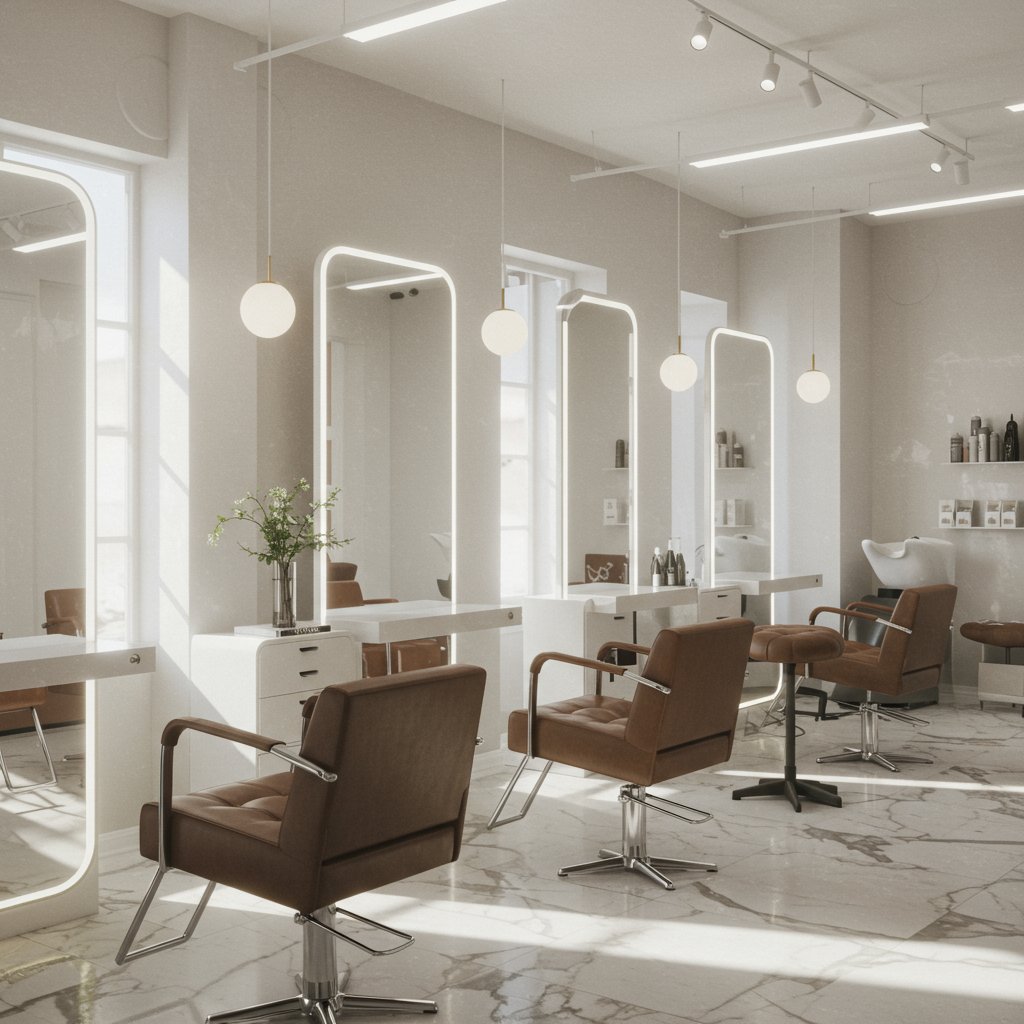
Understanding what constitutes proper sanitation can empower you to make informed choices about where you receive your hair services. It’s about more than just a tidy appearance; it involves specific, science-backed protocols for disinfecting tools, cleaning surfaces, and preventing the spread of bacteria, fungi, and viruses. In this comprehensive guide, we will delve into the essential best practices for a clean salon, exploring everything from the different levels of decontamination to the specific procedures for tools, stations, and personal hygiene. By the end, you'll know exactly what to look for and why it matters, ensuring your next salon visit is as safe as it is stylish.
---
The Foundation: Sanitation vs. Disinfection vs. Sterilization
To appreciate a salon's commitment to hygiene, it's crucial to understand the terminology that professionals use. These aren't interchangeable words; they represent distinct levels of cleaning with different outcomes. A top-tier salon employs all three methods appropriately throughout their space and service protocols. Misunderstanding these terms can lead to inadequate safety measures, making this knowledge the bedrock of a safe salon environment.
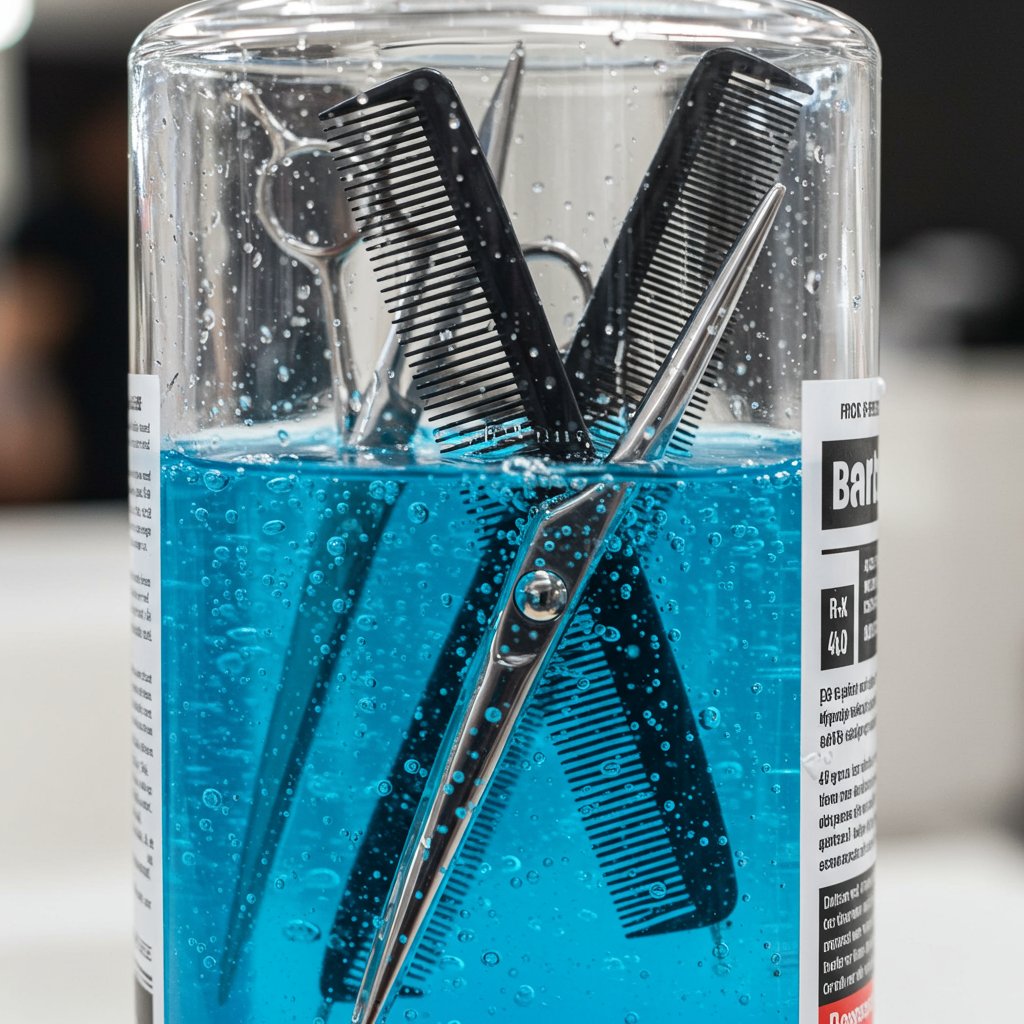
The Three Tiers of Clean
- Cleaning/Sanitation: This is the most basic and fundamental first step. It involves using soap and water to physically remove visible dirt, debris, hair, and product residue from a surface or tool. While sanitation reduces the number of germs, it doesn't eliminate them. Every tool and surface must be thoroughly cleaned before it can be properly disinfected. Think of this as clearing the battlefield before the real fight against microbes begins.
- Disinfection: This is the process that eliminates most pathogenic (harmful) microorganisms, such as bacteria, viruses, and fungi, on non-porous surfaces. In a salon setting, this is most commonly achieved by completely immersing pre-cleaned tools in an EPA-registered, hospital-grade disinfectant for a specific contact time (usually 10 minutes). The iconic blue liquid, often Barbicide, is a prime example. Disinfection is the standard for items that come into contact with clients but do not break the skin, such as combs, brushes, and scissors.
- Sterilization: This is the highest level of decontamination, destroying all microbial life, including spores. It is typically achieved using high heat and pressure in a machine called an autoclave. While more common in medical or esthetic settings where skin may be punctured (like with extraction tools or needles), some high-end salons may use autoclaves for metal implements like shears as an extra measure of safety. It's the absolute gold standard for ensuring an object is completely free of any living organism.
---
Tool and Equipment Hygiene: The Non-Negotiables
The tools a stylist uses are central to their craft, and their cleanliness is central to your safety. Every comb, brush, shear, and clipper guard that touches a client must undergo a rigorous cleaning and disinfection process between each and every use. There are no shortcuts and no exceptions. This meticulous attention to detail prevents cross-contamination and the spread of scalp conditions or infections from one person to another.
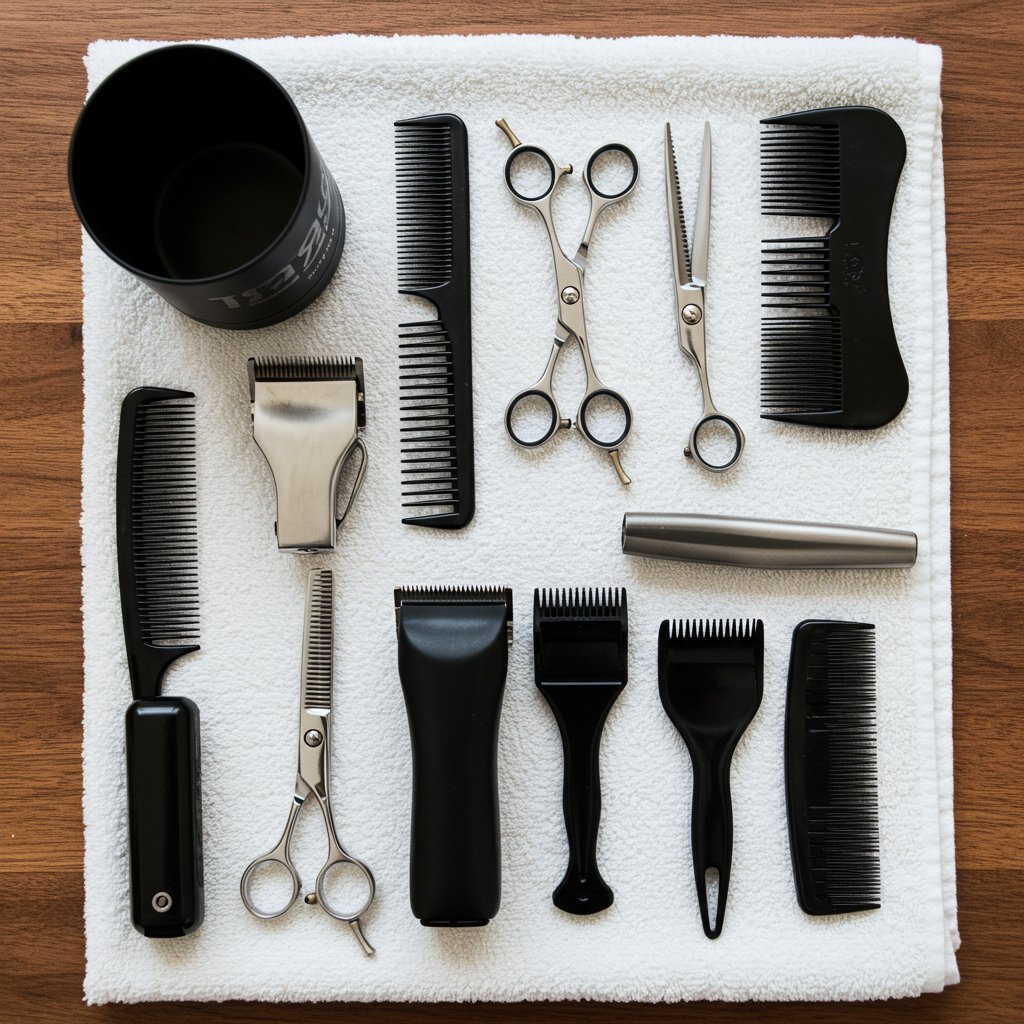
Multi-Use vs. Single-Use Items
Professional salons categorize their tools to ensure proper handling. Multi-use items, such as metal shears, plastic combs, and brushes, are designed to be cleaned and disinfected. The standard procedure is to first remove all hair and debris, scrub the item with soap and warm water, rinse it thoroughly, and then fully submerge it in an EPA-registered disinfectant for the manufacturer-recommended time. After disinfection, tools should be rinsed, dried with a clean towel, and stored in a closed, clean container—not left out on the station.Conversely, single-use items are porous materials that cannot be properly disinfected and must be discarded after one use. This category includes items like neck strips, cotton pads, and some types of nail files or buffers in salons that offer nail services. A salon that attempts to reuse these items is cutting corners and compromising client safety. Observing your stylist open a new neck strip or use fresh cotton is a clear sign they are adhering to professional standards.
---
Station and Surface Cleanliness: Creating a Pristine Environment
A stylist's station is their workspace, but it's also your personal space for the duration of your appointment. Its cleanliness directly impacts your comfort and safety. A diligent approach to surface hygiene should be visible from the moment you sit down. This includes not only the immediate styling station but also high-touch areas throughout the salon, such as the reception desk, door handles, and restrooms.
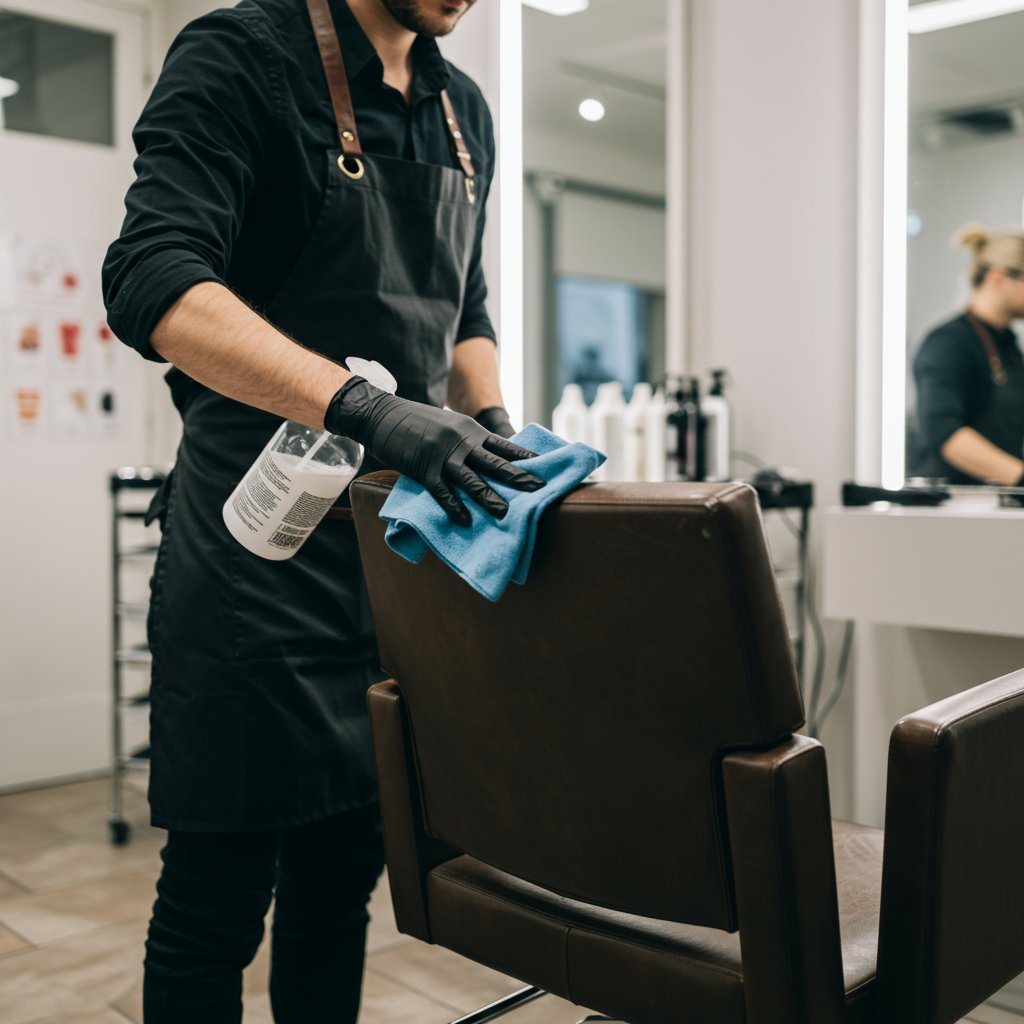
From Chair to Shampoo Bowl
Before you even take a seat, the styling chair, including its armrests, should be wiped down with a disinfectant. The countertop where tools are placed should be clear of clutter and sanitized between clients. Any capes or gowns provided must be fresh and clean for each individual. The shampoo area requires special attention. Shampoo bowls must be cleaned and disinfected after every client to prevent the buildup of hair, product, and microbes. Faucets and handles should also be regularly wiped down.Beyond the individual stations, the overall environment speaks volumes. Floors should be swept regularly to remove fallen hair, creating a slip-free and tidy space. Mirrors should be free of smudges and product splatter. A salon that maintains a visibly clean and organized space demonstrates a deep-rooted culture of hygiene that likely extends to the less visible practices, giving clients peace of mind.
---
Personal Hygiene for Stylists: The Professional Standard
The health and hygiene of the service provider are just as important as the cleanliness of their tools. A stylist is in close physical proximity to their clients, making their personal hygiene a critical component of the salon's overall safety protocol. This professionalism demonstrates respect for the client and a commitment to maintaining a healthy environment for everyone.
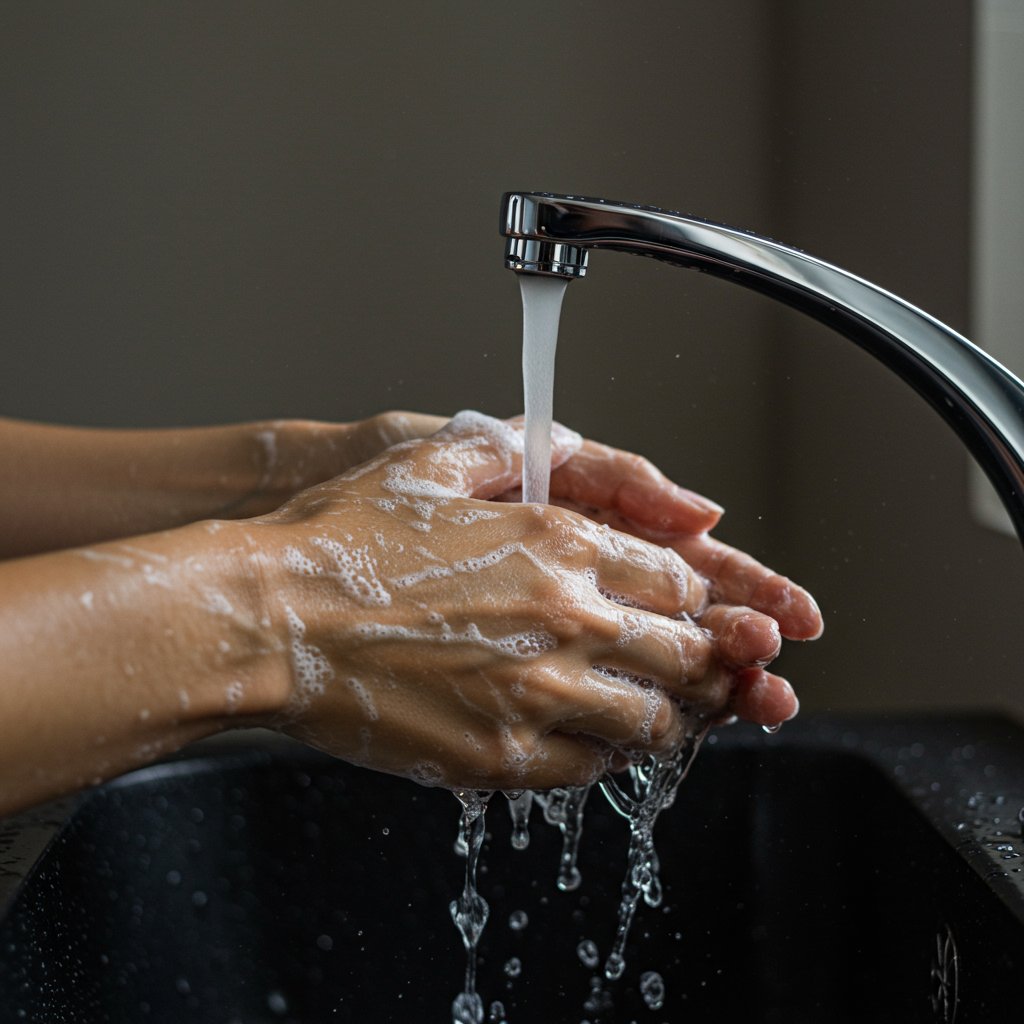
Hand Washing and Professional Attire
Proper hand hygiene is the single most effective way to prevent the spread of germs. Stylists should wash their hands thoroughly with soap and water before and after every single client service. The use of hand sanitizer can be a good supplement, but it should not replace traditional hand washing. This simple act is a cornerstone of infection control in any service-based industry.Professional attire also plays a role. Stylists should wear clean clothes or aprons each day. An apron not only protects their clothing but also provides a clean barrier. Furthermore, it is a stylist's professional and ethical responsibility to stay home if they are feeling unwell. Working while sick puts every client at unnecessary risk. A salon with a clear sick-leave policy for its staff shows that it prioritizes the well-being of its community over short-term business.
---
Water and Air Quality: The Unseen Elements of a Clean Salon
While sanitized tools and clean surfaces are visible indicators of a hygienic salon, two often-overlooked elements are crucial for a truly healthy environment: water and air. The quality of the water used to wash hair can affect the final result, and the air quality can impact the health and comfort of both clients and staff, especially in a space where chemical services are performed.
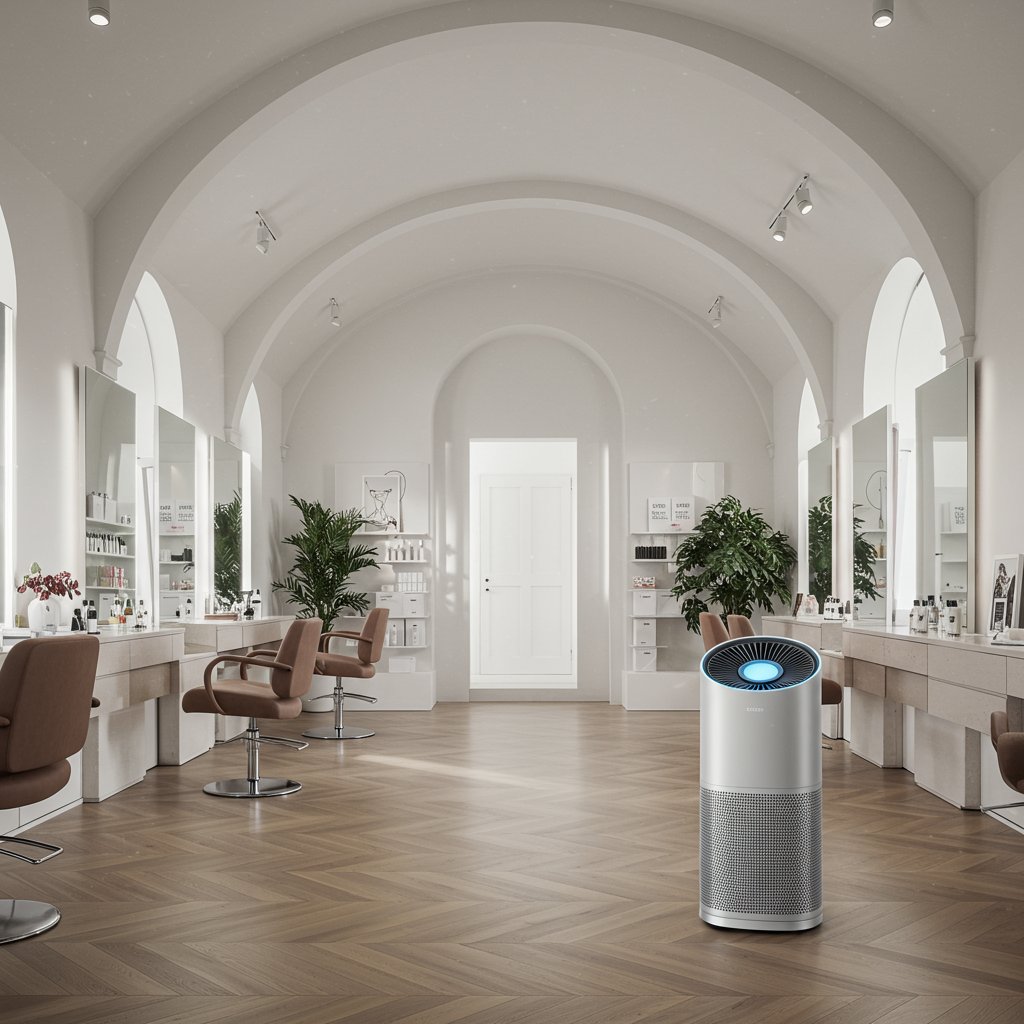
The Importance of Filtration
Hard water, which contains a high concentration of minerals like calcium and magnesium, can leave deposits on hair, making it feel dull, dry, and difficult to manage. High-end salons often invest in water filtration or softening systems to ensure the water used at their shampoo bowls is pure. This not only leads to better hair outcomes but also prevents mineral buildup in their plumbing and equipment.Proper ventilation is equally critical. Hair sprays, chemical treatments like color and keratin, and even cleaning agents can release fumes and volatile organic compounds (VOCs) into the air. A salon with a robust HVAC (Heating, Ventilation, and Air Conditioning) system, supplemented by air purifiers with HEPA filters, ensures constant air circulation. This removes airborne particles and chemical odors, creating a safer and more pleasant breathing environment for everyone inside.
---
Handling Linens and Capes: Preventing Cross-Contamination
Every client deserves the comfort and assurance of a fresh, clean barrier during their service. The towels used to dry hair and the capes used to protect clothing are high-contact items that require meticulous handling and laundering procedures to prevent any risk of cross-contamination. A pile of used, damp towels is a breeding ground for bacteria and mildew.
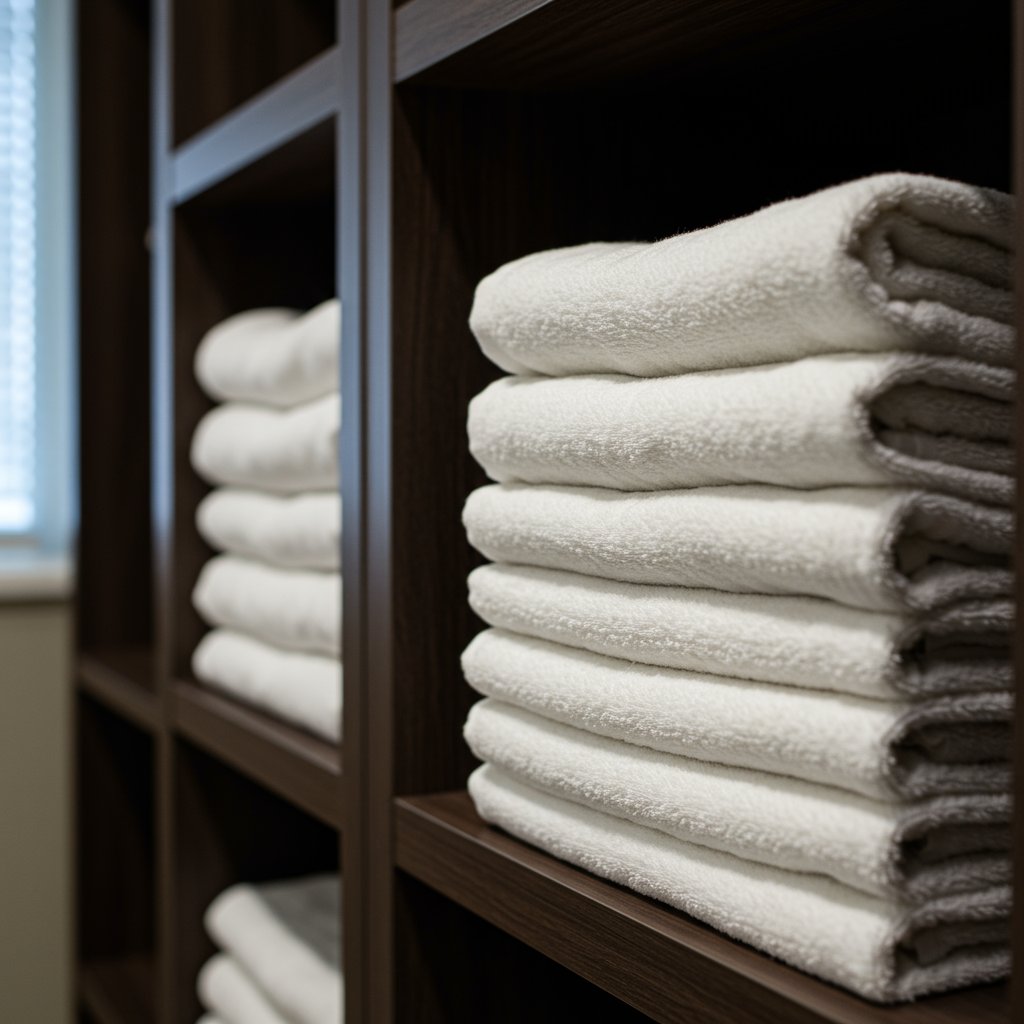
Proper Laundry Protocols
A professional salon has a strict policy: one client, one set of linens. A fresh cape should be used for every client, and towels should never be reused before being laundered. Soiled linens must be stored in a designated, covered hamper, separate from clean linens. The laundering process itself should involve washing with detergent in hot water to effectively kill germs.Once laundered and thoroughly dried, clean towels and capes must be stored in a clean, closed cabinet or drawer. They should not be left exposed on open shelving where they can collect dust, hair, or aerosolized products from the salon floor. This closed-loop system—from clean storage to client use, to a sealed hamper, to proper laundering, and back to clean storage—is essential for maintaining the highest standards of hygiene.
---
Waste Disposal and Safety Protocols
Properly managing waste is the final, crucial step in maintaining a clean and safe salon. From swept-up hair to used color tubes and disposable blades, a salon generates various types of waste that must be handled responsibly and in accordance with local health regulations. An organized and systematic approach to waste disposal is another sign of a well-run, professional establishment.
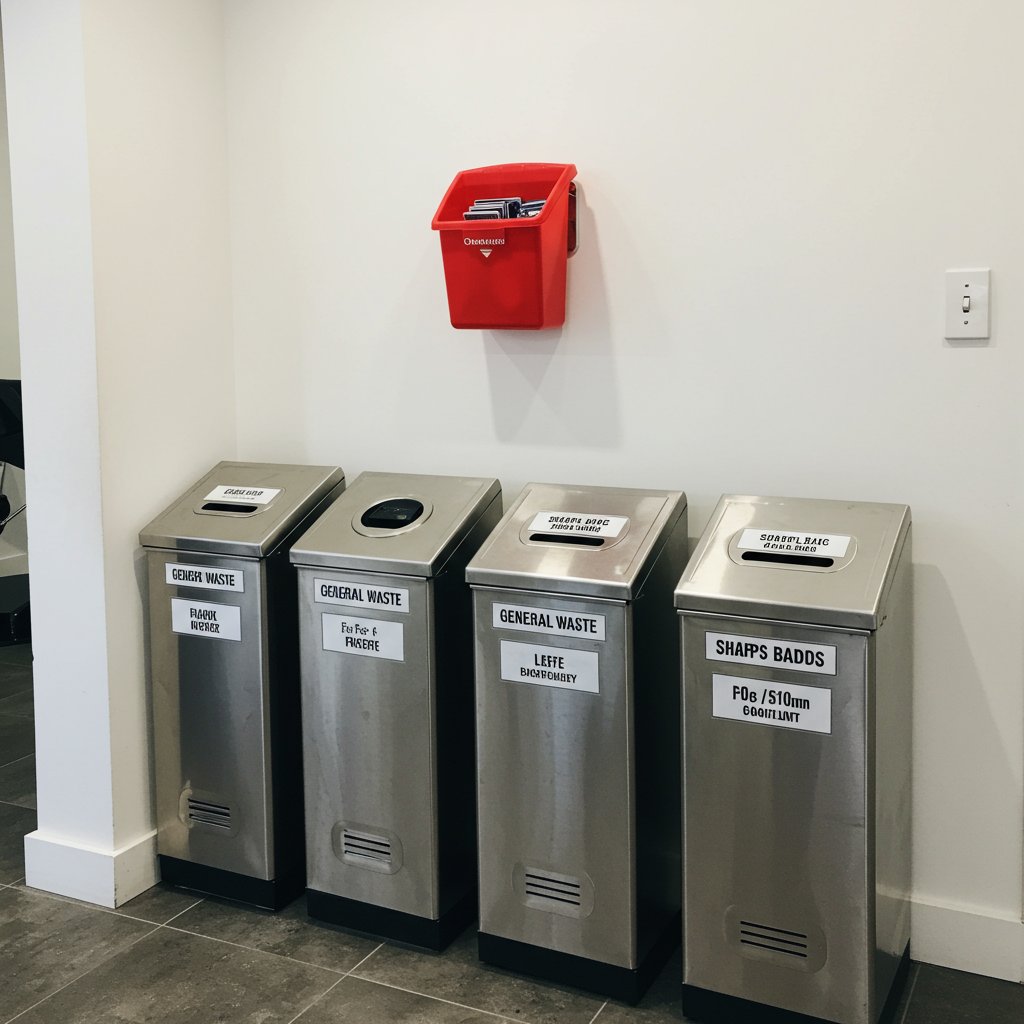
More Than Just a Trash Can
Salons should use closed, hands-free trash receptacles to contain waste and odors, and these should be emptied regularly throughout the day. Hair clippings should be swept up and disposed of immediately after each haircut. For waste from chemical services, such as used foils or leftover hair color, specific disposal procedures may be required to protect the environment.Most importantly, any sharp, single-use items, such as razor blades used for neck shaves or texturizing, must be disposed of in a designated, puncture-proof sharps container. This is a critical safety measure to prevent accidental cuts and potential exposure to bloodborne pathogens for both staff and sanitation workers. Seeing a clearly visible and properly used sharps container is a definitive sign that a salon takes safety seriously.
---
Quick Tips: How to Spot a Hygienic Salon
As a client, you are your own best advocate. Use this checklist on your next visit to assess a salon's commitment to cleanliness:
- Observe the Tools: Are tools being taken from a closed container or a disinfecting solution? Or are they sitting out on the counter with hair on them?
- Check the Station: Is the chair, counter, and mirror clean before you sit down? Does the stylist use a fresh, new neck strip?
- Watch the Stylist: Do they wash their hands between clients? Is their attire clean and professional?
- Look at the Linens: Is the cape they place on you fresh? Are the towels clean and dry?
- Scan the Space: Are the floors free of hair piles? Is the shampoo bowl clean? Are trash cans covered?
- Ask Questions: Don't be afraid to ask about their sanitation procedures. A professional salon will be proud to explain their commitment to your safety.
---
Frequently Asked Questions (FAQ)
Q1: What is the blue liquid that salon tools are soaked in? > That blue liquid is typically a hospital-grade, EPA-registered disinfectant, with Barbicide being the most well-known brand. It's designed to kill a broad spectrum of bacteria, viruses, and fungi on non-porous surfaces like combs, shears, and plastic guards.
Q2: How often should a stylist's station be cleaned? > The station should be cleaned and disinfected between every single client. This includes wiping down the chair, countertops, and any other surfaces the previous client or the stylist's tools may have touched.
Q3: Is it okay if my stylist uses the same comb on me that they used on the person before? > Absolutely not. Every multi-use tool that comes into contact with a client must be thoroughly cleaned and disinfected before it can be used on the next person. Using a dirty comb is a major hygiene violation.
Q4: Can I bring my own tools to the salon? > While some clients consider this, it's generally not necessary if you choose a reputable salon with impeccable hygiene standards. Furthermore, professional stylists are accustomed to the specific weight, balance, and feel of their own high-quality tools, which allows them to perform their best work.
Q5: What should I do if I notice unsanitary practices at a salon? > If you are uncomfortable with the level of cleanliness, you have the right to stop the service and leave. You can express your concerns to the salon manager. If the issues are serious, you can also report the salon to your state's cosmetology board, which is responsible for enforcing health and safety regulations.
Q6: Does a 'clean-looking' salon always mean it's sanitary? > Not necessarily. A tidy appearance is a good start, but true sanitation involves specific, often unseen processes. Look for evidence of these processes, such as disinfectant jars, stylists washing hands, and the use of fresh capes and tools for each client. A salon can look clean on the surface but fail at proper disinfection protocols.
---
Conclusion: Your Health is the Foundation of Great Style
Choosing a hair salon is about more than just finding a stylist who can master the perfect balayage or haircut. It’s about finding a professional establishment that holds your health and safety in the highest regard. Proper salon sanitation and hygiene are not optional luxuries; they are the essential, non-negotiable foundation upon which all great beauty services are built.
By being an educated and observant client, you not only protect yourself but also help elevate the standards of the entire industry. A salon that invests in top-tier hygiene practices is investing in its clients' well-being and its own professional integrity. The next time you walk into a salon, look beyond the decor and the portfolios. Look for the signs of meticulous cleanliness, and rest assured that you are in the best possible hands—clean, sanitized, and ready to create something beautiful, safely.


